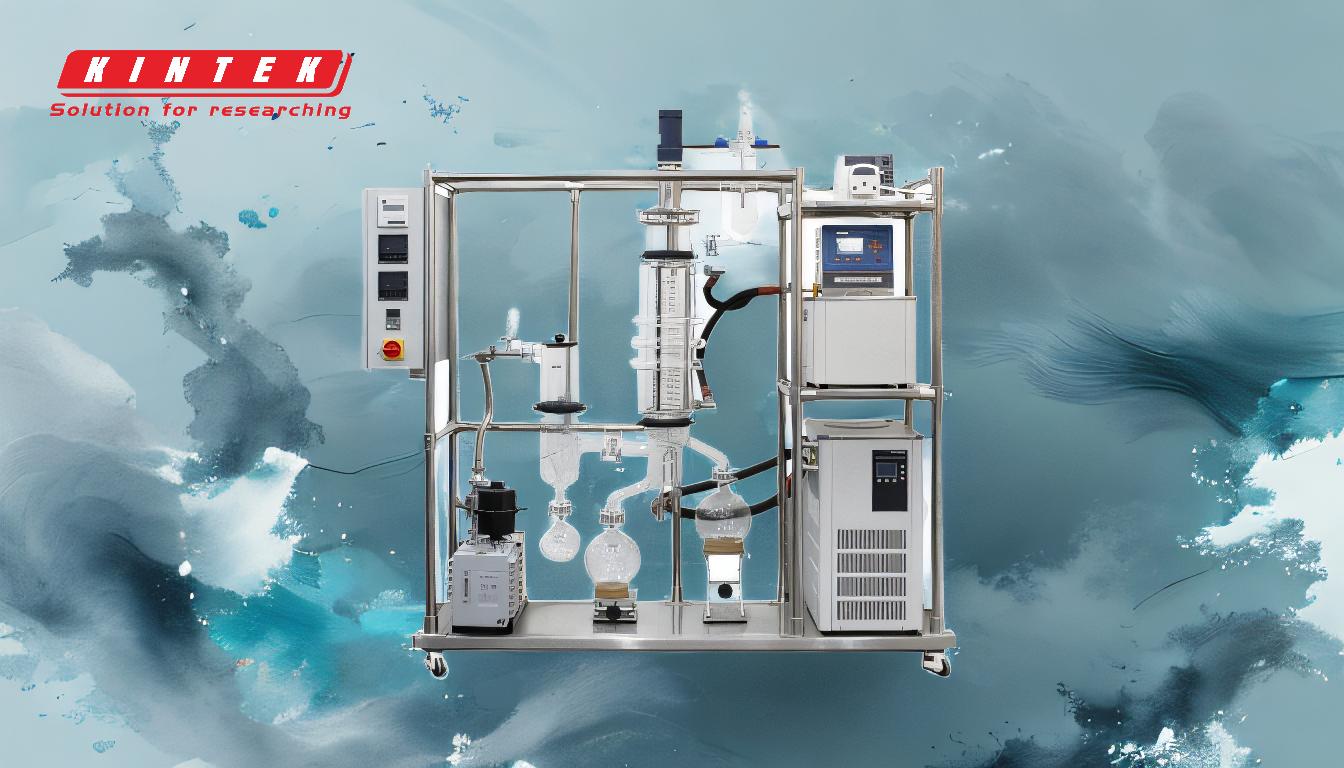Distillation is a fundamental separation process used to purify or isolate components of a liquid mixture based on their differing volatilities and boiling points. It involves heating the mixture to vaporize the more volatile components, condensing the vapor back into liquid form, and collecting the purified substance. This process is widely applied in industries, laboratories, and even households for producing purified liquids, such as distilled water, alcoholic beverages, and essential oils. The effectiveness of distillation relies on the difference in boiling points of the components, with simple distillation requiring a minimum difference of 70°C for efficient separation. Advanced distillation techniques can handle more complex mixtures with closer boiling points.
Key Points Explained:

-
Definition and Purpose of Distillation:
- Distillation is a mass transfer process that separates components of a liquid mixture based on their volatility and boiling points.
- Its primary purpose is to purify or isolate specific substances by leveraging the thermodynamic properties of the mixture's components.
-
Basic Principles of Distillation:
- The process relies on heating the mixture to vaporize the more volatile components.
- The vapor is then cooled and condensed back into a liquid, which is collected as the purified product.
- The key factor is the difference in boiling points between the components, which determines the efficiency of separation.
-
Steps in the Distillation Process:
- Heating: The liquid mixture is heated to its boiling point, causing the more volatile components to vaporize.
- Vaporization: The vapors rise and move through the distillation apparatus.
- Condensation: The vapors are cooled in a condenser, turning them back into liquid form.
- Collection: The condensed liquid is collected in a separate container, leaving behind the less volatile components.
-
Types of Distillation:
- Simple Distillation: Used for separating liquids with significantly different boiling points (minimum 70°C difference). It involves a single heating and condensation cycle.
- Fractional Distillation: Suitable for mixtures with closer boiling points. It uses a fractionating column to achieve multiple vaporization-condensation cycles, enhancing separation efficiency.
- Steam Distillation: Used for heat-sensitive compounds, such as essential oils, where steam is introduced to lower the boiling points of the components.
- Vacuum Distillation: Applied to substances with high boiling points or those that decompose at high temperatures. It reduces pressure to lower boiling points.
-
Applications of Distillation:
- Industrial Uses: Purification of chemicals, production of fuels (e.g., gasoline, diesel), and separation of air components (e.g., oxygen, nitrogen).
- Laboratory Uses: Purification of solvents and reagents for experiments.
- Household Uses: Production of distilled water and alcoholic beverages like whiskey and vodka.
-
Key Considerations for Effective Distillation:
- Boiling Point Difference: The greater the difference in boiling points, the easier it is to separate the components.
- Apparatus Design: The efficiency of the distillation process depends on the design of the distillation setup, including the heating source, condenser, and collection system.
- Temperature Control: Precise control of heating and cooling is crucial to avoid overheating or incomplete separation.
-
Limitations of Distillation:
- Energy-Intensive: Distillation requires significant energy input for heating and cooling, making it less efficient for large-scale applications.
- Component Overlap: Mixtures with components having very close boiling points are challenging to separate using simple distillation.
- Thermal Degradation: Heat-sensitive compounds may decompose during the process, requiring specialized techniques like vacuum or steam distillation.
-
Advanced Distillation Techniques:
- Azeotropic Distillation: Used for mixtures that form azeotropes (constant boiling mixtures). It involves adding an entrainer to break the azeotrope and achieve separation.
- Extractive Distillation: Similar to azeotropic distillation but uses a solvent to alter the relative volatility of the components.
- Molecular Distillation: A high-vacuum technique used for separating heat-sensitive materials, such as vitamins and fatty acids.
By understanding these key points, one can appreciate the versatility and importance of distillation in various fields, as well as the factors that influence its effectiveness.
Summary Table:
| Aspect | Details |
|---|---|
| Definition | Separation of liquid mixtures based on volatility and boiling points. |
| Key Principle | Heating to vaporize volatile components, then condensing and collecting. |
| Types | Simple, Fractional, Steam, Vacuum, Azeotropic, Extractive, Molecular. |
| Applications | Purification of chemicals, fuels, solvents, distilled water, and beverages. |
| Key Considerations | Boiling point difference, apparatus design, and temperature control. |
| Limitations | Energy-intensive, component overlap, and thermal degradation risks. |
Want to learn more about distillation or need expert advice? Contact us today for tailored solutions!









